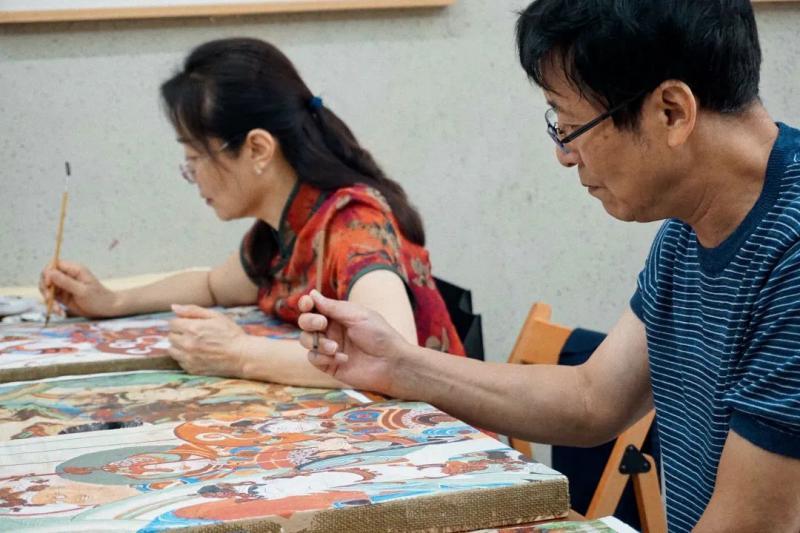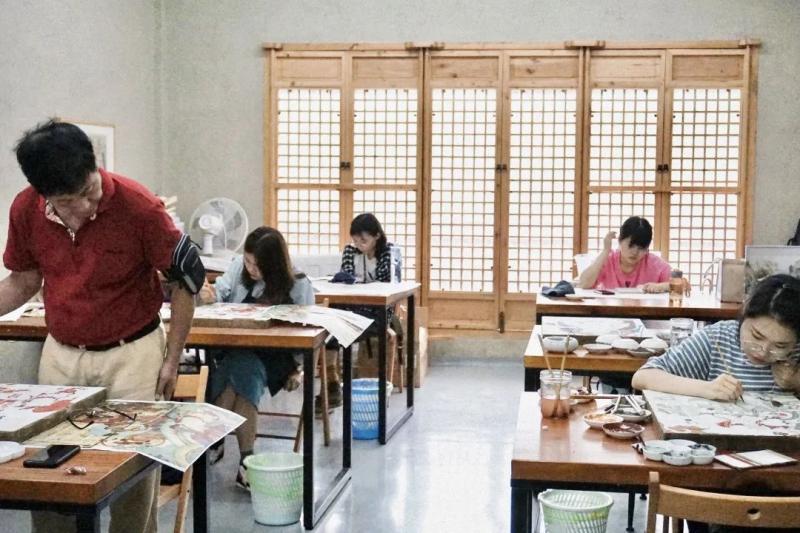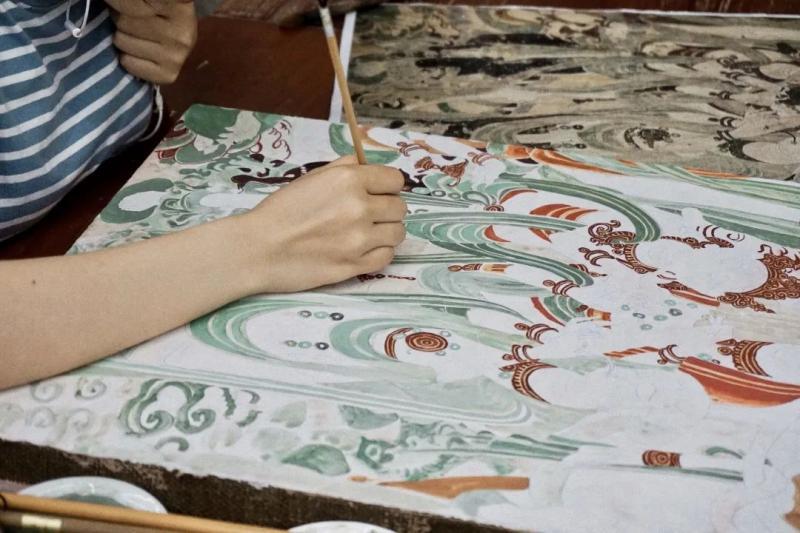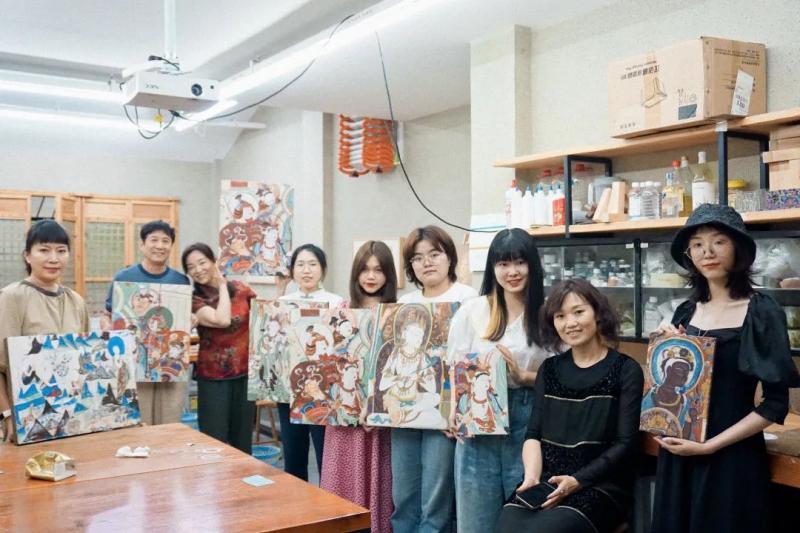2021Academic Year Short Course Review「Mineral Pigment Painting in Buddhist Art」




From June 7th to June 18th, "Shape and Color on the Silk Road: Buddha Statues and Rock Colors" was held in Yuancenter. The course mainly involved the theoretical part and hands-on practice of rock color painting in Dunhuang art. This course is tutored by Wang Xueli, associate researcher of Dunhuang Academy, with the theme of copying Dunhuang frescoes, leading the students to experience the style evolution of Dunhuang frescoes in different periods and the integration of drawing techniques.
The first week
By understanding the characteristics of the times, historical origin and development behind the Dunhuang murals, the students gradually improved their aesthetic ability to this traditional Chinese painting. He also made the bottom of the clay tablet by himself, analyzed the characteristics of natural mineral pigments, and understood the unique charm of Dunhuang art.
The second week
Under the guidance of Wang Xueli's instructor, the students entered the stage of mural copying, and realized the basic attributes and color relationships of traditional skills in practice.
Yuan center: For beginners or students with zero foundation, who have no practical foundation in painting or art before, will they have any difficulties in learning this course?
Wang Xueli: It depends on what kind of connection the students want to make. Among the various students I have come into contact with, there are cultural creations related to Dunhuang, easel painting and art development, etc., and some students will combine what they have learned with public large-scale murals. In fact, the nutrition is already there, the key is to see how you nourish it.
Yuan center: From the perspective of individual learners, this kind of course can bring them more possibilities, and at the same time, it can be used as a channel to help their future development, right?
Wang Xueli: Yes. From the perspective of studying Dunhuang art, I personally think that Dunhuang art is essentially the most intuitive artistic presentation and the most direct expression of the artist. The courses in the China Center can help students get in touch with the most intuitive traditional techniques and mineral pigments, and at the same time, arouse them to have a more sincere understanding and appreciation of the hot land under their feet. Just like a student in the center who has participated in our course for two consecutive years, she can also feel that she has a deeper feeling this year. Therefore, in my opinion, the feeling of the frescoes shattered by the vicissitudes of history brought about by historical changes is itself a precious combination of art lovers and traditional art.
